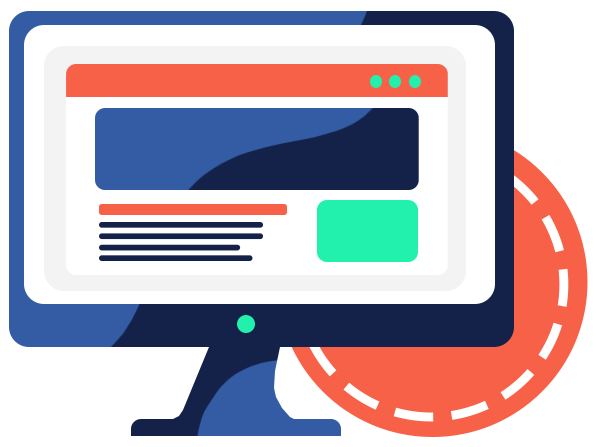HubSpot CMS Website Development
Build a Powerful Online Presence That Drives Business Growth

Is Your Website Optimized?
You know that your website is a critical tool for driving revenue and demonstrating the value of your marketing efforts. But is your website truly optimized to achieve your key performance indicators (KPIs)?
Transform Your Website into a High-Performing Asset
Many CMOs face common website challenges that hinder their ability to achieve their KPIs. A confusing or outdated website can drive visitors away and hurt your conversion rates, while a lack of integration with your CRM and marketing automation tools can lead to data silos and inefficient lead management. Additionally, without proper tracking and analytics, it can be difficult to measure the impact of your website on revenue generation. Our team of experienced website developers can help you overcome these challenges and build a website that drives results.
What to Expect from Website Development
Increase Website Conversion Rates
We'll create a user-friendly website experience that guides visitors towards desired actions, such as filling out forms, downloading resources, or making purchases.
Lower Cost per Lead (CPL)
By optimizing your website for lead generation and integrating it with your CRM and marketing automation tools, we'll help you capture and nurture leads more effectively, reducing your CPL.
Generate More Sales Qualified Leads (SQLs)
Our Website Development Services
We offer a comprehensive suite of website development services, including:
Website Strategy and Planning
We'll work with you to define your website goals, target audience, and key functionalities.
User Experience (UX) Design
We'll create intuitive and user-friendly website layouts that prioritize a positive browsing experience.
User Interface (UI) Design
We'll design visually appealing and engaging interfaces that align with your brand identity.
Website Development
We'll develop your website using the latest technologies and best practices to ensure optimal performance and security.
Responsive Design
We'll ensure your website is optimized for all devices, providing a seamless experience across desktops, tablets, and smartphones.
Growth-Driven Design
We'll implement a growth-driven design methodology to continuously improve your website based on user data and feedback.
Conversion Rate Optimization (CRO)
We'll optimize your website for conversions, using data and best practices to improve lead generation and sales.
Website Maintenance and Support
We'll provide ongoing website maintenance and support to ensure your website remains up-to-date and secure.
Your Partner in Inbound Success
Experienced Website Developers
Our team comprises skilled website developers with expertise in various technologies and platforms.